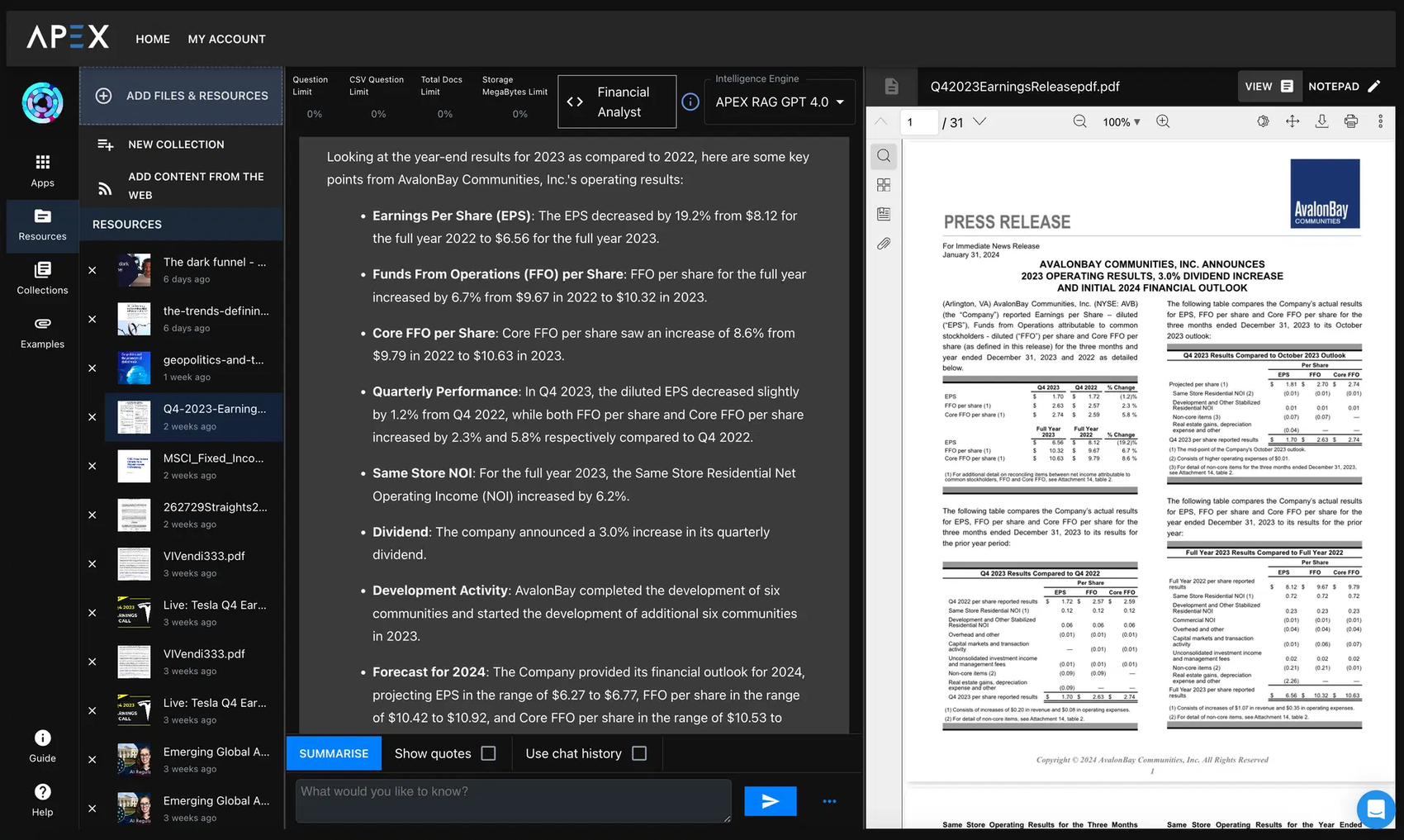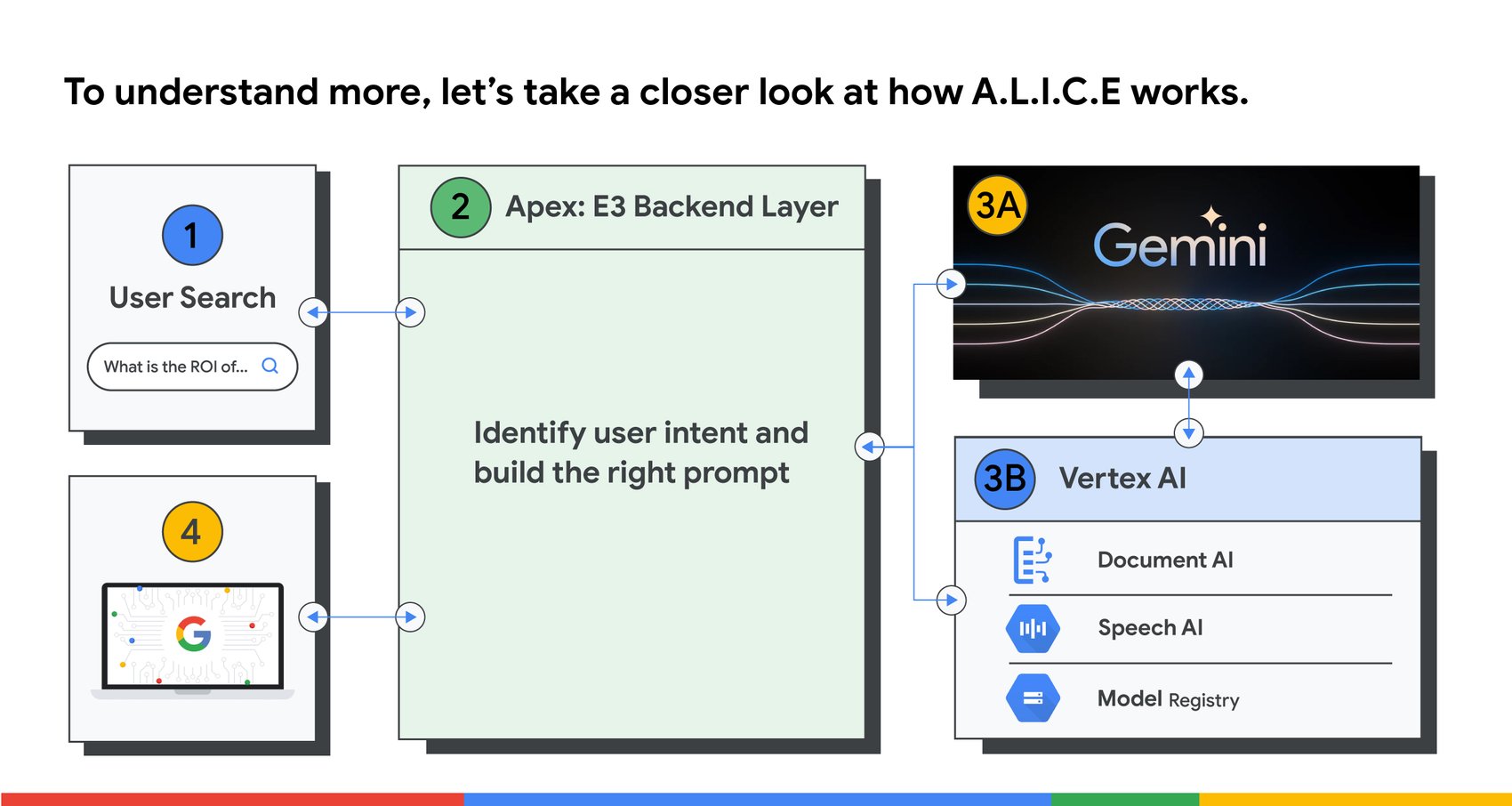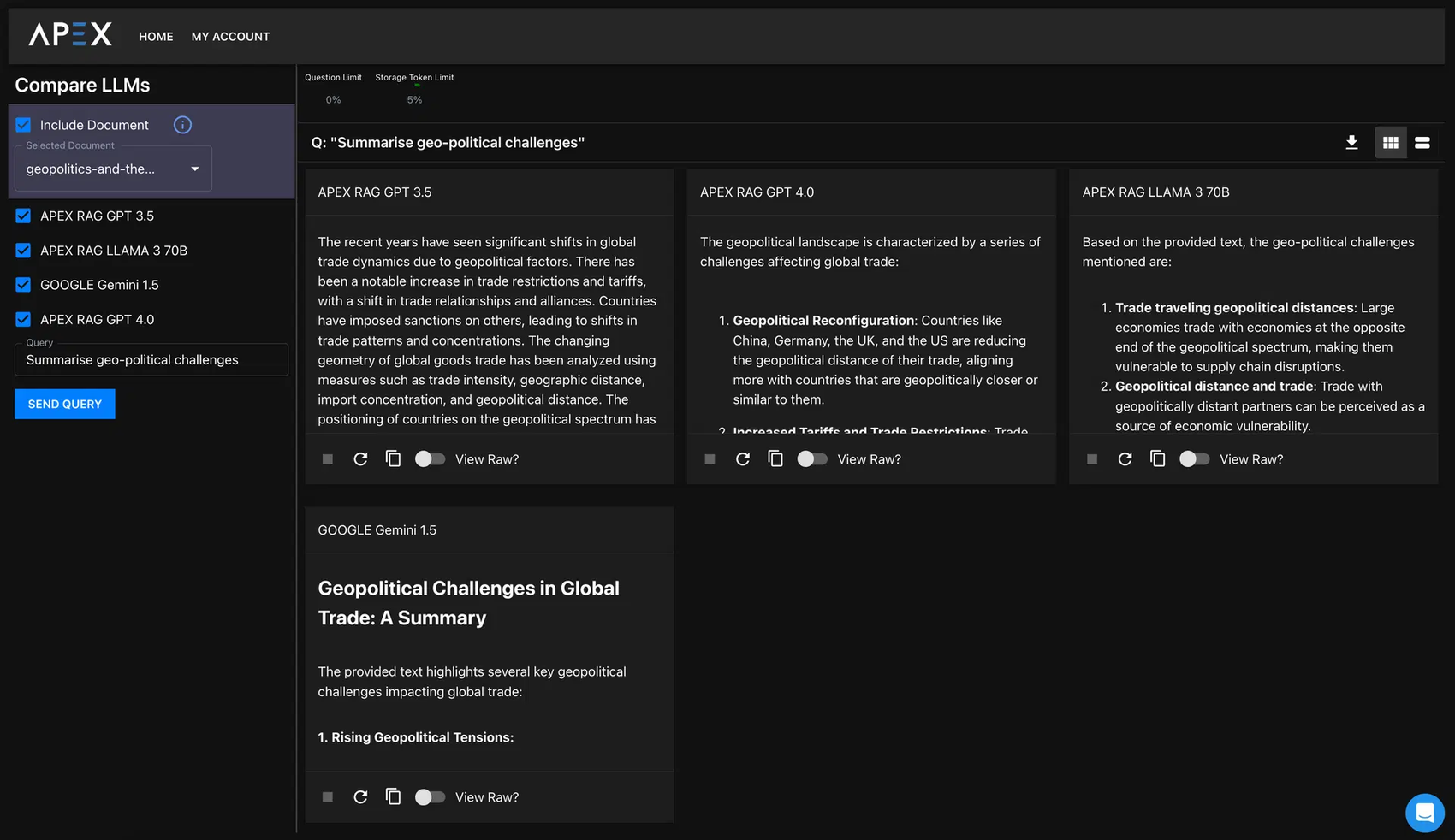A.L.I.C.E. unchained: Meet the AI agent accelerating financial research from weeks to minutes

Stathis Onasoglou
CFA - Fintech Principal, Google Cloud
Julius Von Davier
AI Customer Engineer, Google Cloud
An analyst sits at a cluttered, disorganized desk. Head in one hand, stylus in another, bowed over a screen trying to make sense of the data they gathered.
“A.L.I.C.E, can you get me this month’s publications on arxiv.org that talk about the latest pricing models and create a summary for each one of them?” the analyst asks his trusty partner.
A.L.I.C.E pulls up the results and the analyst squints at them on the screen.
“Okay, now can you give me an implementation for the first two in the list in Python?”
A couple of years ago, this would have been a conversation that could only happen between human quants working at investment firms. It sounds like a laborious process — retrieve all the research, study it, summarize it, implement the results with Python.
But for A.L.I.C.E, a solution built by Apex:E3, this AI agent and digital investment research assistant made quick work of the task.
Usman Khan is the co-founder and CEO of Apex:E3, a fintech company that has a vision of helping capital markets organizations unlock data insights in real-time. His organization has been making business-as-usual tasks like lengthy research and implementation in code happen in seconds, thanks to the combination of ideas and expertise at Apex:E3 combined with generative AI tools available on Google Cloud.
Apex:E3’s resulting products free portfolio managers, quants, and analysts from much of the toil in their work so they can focus on what matters most — interpretation of results, optionality, and decision making.
“By integrating our innovative, proprietary machine learning capabilities with Google Cloud’s generative AI services, we are poised to deliver a transformative and game-changing experience for our clients,” Khan said.
A virtual assistant for sell and buy-side analysts
Analyzing data for investment and financial purposes is typically a long process. It can take weeks or months to set up the right infrastructure, hours to get the right data, and potentially days or longer to build a model to analyze the data.
“This can happen now with significantly less time and effort,” Khan said. “We are increasing productivity for front-office analysts considerably, by extracting key points from large documents in a conversational and interactive manner, or through automatically creating proof of concept code from advanced research papers.”.


A.L.I.C.E. can quickly answer questions about information uploaded to the agent, such as this company press release. (Click to zoom)
A.L.I.C.E faces two main technical challenges in achieving these goals. The first is giving users the confidence that A.L.I.C.E is answering the right questions. Second is ensuring that A.L.I.C.E provides accurate and high signal-to-noise answers.
Avoiding seemingly true but inaccurate responses, commonly known as hallucinations, is one of the top considerations for any tool that uses generative AI. This is especially the case in investment management and finance, where fiduciary duties and regulations are paramount concerns.
While an AI agent like A.L.I.C.E. can greatly accelerate the process of research and decision-making, it is still very much a tool and those decisions should ultimately lie with the analyst or portfolio manager. It is their input on whatever A.L.I.C.E. delivers that drives the ultimate decision, assessment, report on an investment.
This approach to AI management is referred to as “human-in-the-loop,” and it is a key part of Google’s own AI Principles, as well as many of our customers. At the end of the day, AI should be accountable to people the same way portfolio companies are accountable to their customers.

One useful method for human-in-the-loop model training is called “reinforcement learning from human feedback,” or RLHF. It is part of a virtuous circle where the human steers the generative AI model to more accurate results, by providing feedback on each prompt. Given that sensitive information can be covered in these interactions, it is important to ensure that your AI partner offers enterprise assurances for privacy and security, which is a longstanding priority at Google Cloud. The customer’s data is always the customer’s data.
To understand more, let’s take a closer look at how A.L.I.C.E works.
Inside a financial services AI agent
A typical user journey starts with a user asking a question through a user interface (step 1 in the following diagram). The user might be after an accurate numerical answer, a quantitative exercise, an analytical answer, or a different scenario. For instance, the analyst might ask, “What is the average remaining life of PPE assets of company X?” Or they might tell A.L.I.C.E., “Backtest this strategy written in Python against XYZ tickers, over this period of time.”


Step 2 is to understand the intent of the user. A.L.I.C.E achieves this in a two-pronged approach:
- User intent, whether the analyst is after a numerical result or a textual summary, is established using a similarity matching algorithm, which compares their query against a database of knowledge and prior requests. This helps determine the nature of the request and the best way to proceed in addressing it.
- Once A.L.I.C.E. has determined the approach, the user is guided via a simple user interface that will run the most relevant service or back-end tools, be they document summarisation, natural language analysis, spreadsheet analysis, database queries, etc. This process is all happening in the background, with the user simply seeing the prompts and results.
Once A.L.I.C.E. has determined what type of question needs to be answered, it taps into Vertex AI, Google Cloud’s end-to-end, enterprise-ready AI platform (step 3A). Vertex is where the range of AI APIs and models are accessed from.
For instance, Document AI is used to parse financial reports and extract specific information from other documents the user might have uploaded, such as IFRS or GAAP compliant reports, regulatory filings, internal research, or notes from other analysts. Inputs don’t have to be only textual. For example, Google Cloud’s Speech-to-Text API is used to transcribe calls (e.g. investor calls or media appearances), so the analyst can upload discussions and recorded conversations to include all relevant information.
Vertex is also where proprietary models from Apex:E3 and others live. Apex has built a repository of proprietary machine learning models attuned to the needs of its financial services customers. They have the added benefit of being continuously improved and managed through the MLOps services of Vertex AI, such as the Model Registry, which is used as a single place to store, version, evaluate, and deploy models.
Typically, an answer is arrived at not by only one of these means but by combining the Apex:E3 models and Google tools like Document AI and Speech-to-Text, which all work in concert to build and serve an answer. This is part of the important shift to multimodal models that can handle a range of information sources without the need to jump between tools or interfaces.
Before, this was the domain of data scientists, but now, thanks to the overlay of Gemini across these AI interactions (3B), almost anyone can freely use the service, as natural language prompts bounce between the user interface, Gemini, Vertex, and back, helping each side make sense of what the other is seeking.
Speaking and listening to the data
Context is essential when it comes to interacting with AI models. Without context, models like Gemini, and Bard before it, need to rely on their general understanding of the world based on their capabilities as a pre-trained foundation model. The capabilities of foundation models are impressive, but in most specialized, domain-specific cases, the models need additional context to answer questions of a domain expert in a compelling manner.
This is no different from asking questions of any person. A casual casual music fan probably knows enough to name a few hits from Jay-Z, Bruce Springsten, and Taylor Swift, but could they list every song on every album in order?
Similarly, base models can comprehend even fairly advanced financial concepts from their training across information sources like the internet and industry-specific datasets. But these models still need further inputs and adjustments to meet the specific needs and requirements that will vary from one financial firm to the next.


Among the many features of A.L.I.C.E. is the ability to select different models to meet different needs for speed and performance.
It is therefore important for users of A.L.I.C.E. or AI agents in general to know the right context to use in the prompt of a question, which is informed by what the user is trying to achieve. As outlined in step 3 above, Apex has effectively built the right context into A.L.I.C.E. to get the Gemini model to answer with increased confidence and correctness. The content on the “messy desk” has provided focused information and context.
Finally, A.L.I.C.E uses Gemini once again to offer a natural conversational response that is more easily understood by the user, grounded to the reality of the context, and providing accurate information that lives in the body of knowledge that A.L.I.C.E and it’s users have accumulated over time.
From 20 steps down to 2
One of Usman Khan’s favorite examples of how this works in the real world is research around publicly traded companies, which he said could take a typical analyst roughly 20 steps and now takes two. “It could take many hours or even weeks, and now it happens in seconds,” Khan said.
Before, the analyst would have to collect a large number of documents to analyze, set up the infrastructure to do that analysis, then train a model to do the work. Now, it’s just those two steps: Question, input into A.L.I.C.E., answer.
“Our clients can look forward to enhanced productivity and the discovery of new
alpha opportunities, all within a secure and robust cloud environment” Khan said. “This collaboration represents a significant move towards revolutionizing how businesses operate and make critical decisions.”
Opening image created with Midjourney, running on Google Cloud, using the prompt: a clever illustration of a financial analyst working super fast at a computer thanks to the help of new software; make it look more financial services, with charts on the screen.



